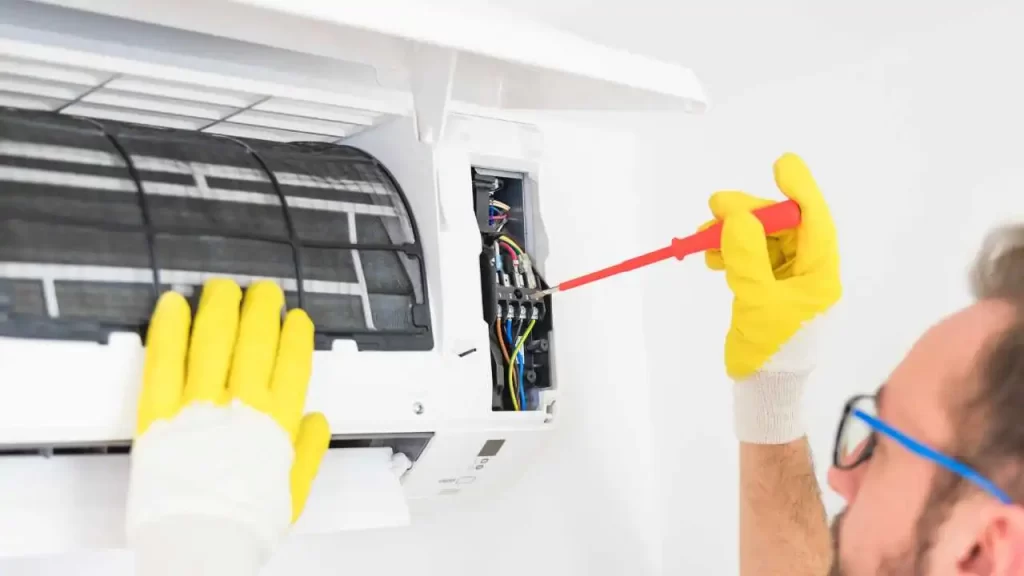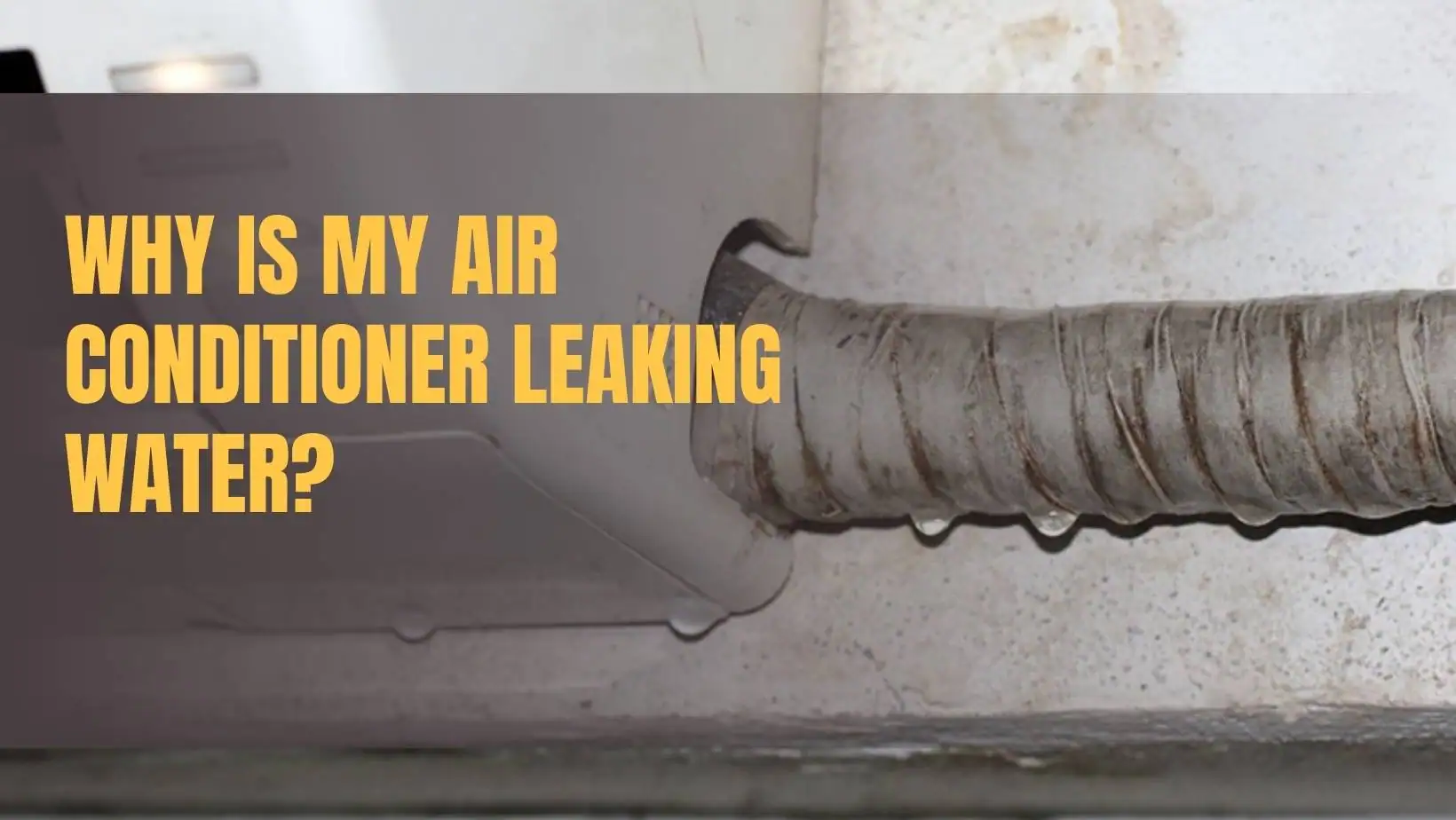How to Inspect Your AC Drain Pan and Condensate Drain Line: A DIY Guide

Your air conditioning unit works hard to keep your home cool and comfortable, especially during those hot summer months. But what happens to all the moisture it removes from the air? That humidity condenses on the cold evaporator coils and collects in a drain pan, then flows out through the condensate drain line. If either the drain pan or the line becomes damaged or clogged, it can cause a whole host of problems, from water damage to mold growth.
That’s why it’s important to inspect your AC drain pan and condensate drain line regularly. In this article, we’ll walk you through the simple steps on how to do it yourself, along with tips for fixing common issues.
Why Inspect Your AC Drain System?
- Prevent leaks and water damage: A clogged condensate drain line can cause water to back up and overflow, which can lead to water damage to your ceilings, walls, or floors.
- Avoid mold and mildew: Standing water in the drain pan is a perfect breeding ground for mold and mildew, which can cause respiratory problems and unpleasant odors.
- Protect your AC unit: Severe clogs and leaks can cause water to back up into the AC unit itself, damaging electrical components.
- Maintain optimal AC performance: A well-maintained drain system helps your AC unit operate efficiently and effectively.
Materials Needed:
- Flashlight
- Screwdriver
- Wet/dry vacuum
- Vinegar or bleach solution (optional)
- Funnel (optional)
Step-by-Step Guide
-
Turn Off the Power: Before you start, turn off the power to your AC unit at the breaker box. This is a critical safety step and will prevent any accidental electrical shocks.
-
Locate the AC Unit: Find your indoor AC unit, typically located in an attic, basement, or utility closet.
-
Find the Drain Pan and Condensate Drain Line: The drain pan is a shallow metal pan located directly under the evaporator coils. You’ll see a white PVC pipe (usually ¾ inch in diameter) coming out of the side of the drain pan – this is the condensate drain line.
-
Inspect the Drain Pan: Use your flashlight to do a visual inspection of the drain pan. Look for:
- Cracks or holes: These can lead to leaks.
- Rust: This can compromise the pan’s integrity.
- Mold or algae buildup: Use gloves if you need to touch or clean these.
-
Inspect the Overflow Pan (if present): Many AC units have a secondary overflow pan located beneath the primary drain pan. Check this for water accumulation, debris, and any signs of mold or algae growth.
-
Inspect the condensate drain line. Follow the condensate drain line from the drain pan. Look closely to see if there are any:
- Visible clogs: You may find dust, dirt, or algae obstructing the line.
- Kinks or Sags: Ensure the line maintains a downward slope throughout. Kinks or sags can hinder drainage.
Cleaning and Clearing Clogs
If you find any of these problems, you may need to clear a clog or clean the pan:
- Clearing a Minor Clog: If you notice a clog in the condensate drain line opening, try using a wet/dry vacuum to suck out the blockage. Create a tight seal between the vacuum hose and the drain pipe for best results.
- Cleaning the Drain Pan & Line: If necessary, remove the access panel of your AC unit to get a closer look at the drain pan. Here’s how to clean it:
-
- Pour some hot water down the drain line to help loosen any buildup.
- Put a small amount of bleach or vinegar solution down the drain to kill mold or algae.
- Clear any debris from the pan with a damp cloth or sponge.
Preventing Future Clogs
- Yearly AC maintenance: Get a professional AC tune-up annually. A technician will thoroughly clean your drain system during service.
- Change air filters regularly: Dirty filters restrict airflow, causing excess condensation and a higher chance of clogs.
- Install a drain line overflow switch: This safety device automatically turns off your AC if it senses a backup.
- Pour vinegar or bleach solution down the line periodically: This can prevent mold and algae buildup.
When to Call a Professional
While you can handle minor inspections and cleaning, call a qualified HVAC technician if:
- You have extensive water damage due to AC leaks.
- Your drain pan requires a replacement.
- You can’t locate the source of a leak.
- You find mold growth that you would prefer to avoid addressing yourself.
Conclusion
Inspecting your AC drain pan and condensate drain line regularly is simple and essential for the overall health and efficiency of your air conditioning system. By following these steps and taking preventative measures, you’ll be ensuring a cool, comfortable, and leak-free environment for years to come.


Why Same-Day AC Repair is Crucial in Las Vegas
When the relentless Las Vegas heat strikes, a broken air conditioner isn't just an inconvenience…

Top 3 Common A/C Repairs & Solutions You Need to Know
Air conditioning systems are important for keeping your home comfortable, specific during the hot summer…



 ICONIER Digital Agency
ICONIER Digital Agency